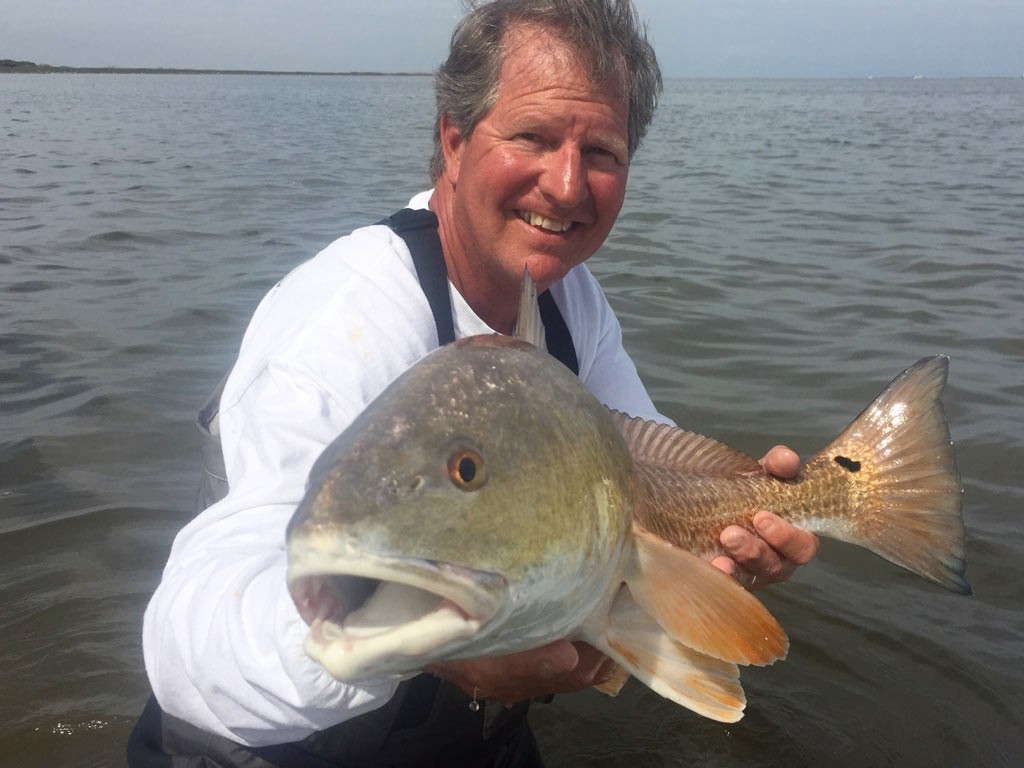Texas, the Lone Star State, boasts incredible fishing opportunities for both freshwater and saltwater anglers. This popularity translates into a thriving market for local fishing guides. If you’re passionate about fishing and helping others experience the thrill of the sport, becoming a fishing guide in Texas might be the perfect career for you. But before you start taking clients out on the water, you need to understand the licensing requirements and regulations. This guide will walk you through the steps necessary to become a licensed fishing guide in Texas, ensuring you’re operating legally and ethically.
Saltwater vs. Freshwater: Understanding the Different Requirements
The licensing process varies depending on whether you plan to guide in saltwater or freshwater environments. Generally, saltwater guiding requires more comprehensive licensing than freshwater.
As Captain Mitch Deane of Laguna Madre Anglers explains, “From Striper fishing on Lake Texoma to offshore Tuna fishing in the Gulf, Texas is full of hot angling fun. And depending on what kind of waters you intend to guide in, the path to doing it legally differs. Generally, you need more licenses for saltwater than for freshwater.”
Let’s break down the specific requirements for each:
Saltwater Fishing Guide Requirements
To legally operate a saltwater fishing charter in Texas, you’ll need the following:
- United States Coast Guard (USCG) Captain’s License: This is a federal license required for operating a vessel for hire.
- All-Water Fishing Guide License: This is a Texas state license specifically for guiding fishing trips in all public waters of the state.
- Boat Registration: All vessels operating in Texas waters must be properly registered with the Texas Parks and Wildlife Department (TPWD).
Obtaining Your USCG Captain’s License
The USCG Captain’s License is the cornerstone of your saltwater guiding career.
When I decided to become a captain, the first thing I did was contact the school where you go to get your license. It’s a 7-day class, 8 hours a day, and they do a full background check on you. It’s more intense than people think but it’s set it up so you know you’re going to pass. And you learn a lot about the water and the right and wrong ways of doing things. You also learn what the different lights mean, as well as who has the right of way.
Capt. Mitch
Here’s a breakdown of the process:
- Enroll in a USCG-approved course: These courses, offered by various maritime academies and training centers, cover navigation rules, safety procedures, vessel operation, and other essential topics. The course duration varies from a few days to several months depending on the license type (e.g., 6-pack or 100-ton Master’s License).
- Accumulate Sea Service: You’ll need to document your time spent on the water. A minimum of 360 days of sea service is required for a 6-pack license, with at least 90 of those days within the last three years. Sea service refers to the time spent working or operating a vessel.
- Pass a Physical Exam and Drug Test: The USCG requires a physical exam to ensure you’re physically fit to operate a vessel safely. You’ll also need to pass a drug test.
- Background Check and TWIC Card: A thorough background check is conducted to assess your suitability for holding a captain’s license. You’ll also need to obtain a Transportation Worker Identification Credential (TWIC) card.
- First Aid and CPR Certification: A valid basic first-aid and CPR certificate are mandatory.
Applying for the All-Water Fishing Guide License
Once you have your USCG Captain’s License, you can apply for the All-Water Fishing Guide License from the TPWD. This license costs $210 for Texas residents and $1,050 for non-residents.
- You’ll need to visit a TPWD office in person to obtain this license.
- Be prepared to present your USCG Captain’s License as proof of qualification.
Registering Your Boat with the TPWD
In Texas, boat registration is handled by the TPWD, not the DMV. Only the owner can register the vessel. You can register by mailing the PWD form with supplementary documents to the TPWD, or in person at a local tax collector’s office. You have to submit the boat’s bill of sale as well as the manufacturer’s statement of origin alongside your boat registration. The registration fee varies from $32 to $150, depending on the boat’s length.
Boat Insurance Considerations
While boat insurance isn’t mandatory for most Texas fishing guide businesses, it’s highly recommended. Party boat operations (boats over 30 feet long carrying more than six passengers) are required to have liability insurance covering at least $300,000.
Gulf of Mexico Federal Waters Fishing Permit
If you plan to fish in federal waters in the Gulf of Mexico (beyond 9 nautical miles), you’ll need a Coastal Pelagics permit and/or a Reef Fish permit, depending on the species you’re targeting. Unfortunately, these permits are currently limited, and you can only acquire them from existing permit holders.
Freshwater Fishing Guide Requirements
The requirements for becoming a freshwater fishing guide in Texas are less stringent than those for saltwater.
If you’re fishing in a lake environment and it doesn’t have navigable waters to the ocean, you’re not required to have a Captain’s License. Non-navigable waters means there’s no commercial traffic going down them.
Capt. Mitch
- Freshwater Fishing Guide License: If you plan to guide on non-navigable waters (waters without commercial traffic), all you need is a Freshwater Fishing Guide License, costing $132 regardless of residency.
- USCG Captain’s License (for Navigable Waters): If you intend to guide on navigable waters like the Sabine River, you’ll need a USCG Captain’s License, following the same process as saltwater guides.
Tips for Starting Your Fishing Guide Business in Texas
Get a little plan together of your goals, what you want to achieve, and how you’re going to get customers. Be patient, it takes a little time to get the clientele together. Do social media, SEO, get friendly with FishingBooker.
Capt. Mitch
- Develop a Business Plan: Outline your goals, target market, pricing strategy, and marketing plan.
- Build Your Online Presence: Create a website and utilize social media to showcase your services and attract clients.
- Network with Local Marinas and Businesses: Partnering with marinas, tackle shops, and other businesses can help you reach a wider audience.
- Provide Exceptional Customer Service: Focus on creating memorable experiences for your clients. Excellent service leads to repeat business and referrals.
- Consider Listing on FishingBooker: FishingBooker can connect you with potential clients actively searching for fishing guides in Texas.
Becoming a Successful Fishing Guide in Texas
Becoming a successful fishing guide in Texas requires more than just knowing how to catch fish. It demands dedication, perseverance, and a genuine passion for sharing the joys of fishing with others. By understanding the licensing requirements, honing your skills, and providing exceptional customer service, you can build a rewarding and fulfilling career in the Lone Star State’s thriving fishing industry.

